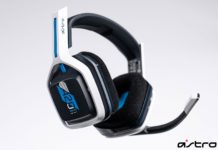If you spend a considerable amount
of time reading about video games then you’ve probably read that the current
gaming market is lacking creativity. Sequels, clones and sports game dominate
the market on all platforms. Gamers looking for something new and innovative
usually have to keep searching before they find a game that is considered
bubbling with creativity. Nintendo doesn’t want us to look too far with Odama
for the GameCube.
Imagine a game that is a mixture of
pinball with elements of military strategy. Now imagine controlling the game
with a controller and a microphone. The controller performs the pinball portions
of the game while the microphone is used to command your troops on the
"battlefield." Now add to the ingredients a huge helping of grating difficulty
and you end up with Odama. It’s not quite pinball and it’s not quite a strategy
game either. Think of it as a pinball game meets Romance of the Three Kingdoms
(but in Japan) from Koei. Unfortunately the gameplay in Odama doesn’t live up to
the crazy premise.
The game itself resembles pinball
during the majority of the game. The Odama ball is the pinball that is launched
by the men in your army. You see the flippers at the bottom of the stage and
each flipper is controlled by either the left or right shoulder button. The
analog stick allows you to control the tilt of the board by moving the Odama
either left or right once it’s moving. Each stage or level includes a variety of
designs for the Odama ball to travel including buildings to destroy and items to
collect for your battle.

The pinball portion is just one
element of the game since the key to winning on each board (a.k.a.. battlefield)
is guiding a large bell to a certain goal. Each board is littered with enemy
troops determined to stop you from guiding the bell (called a hanging bell) to
the goal. But you have an assortment of troops to help protect the bell and
guide the bell to it’s goal. Since your controller is used for the pinball the
microphone is used to issue commands to your troops.
There are several voice commands in
Odama that you will use to control your troops. To move your troops forward or
backwards requires you to say "Advance" or "Retreat" into the microphone. Moving
left or right will have you saying "March Left" or "March Right." Speaking
"Rally" into the microphone will move your troops to a specific area of the
board that you select with the directional pad. You can rally around items that
can be picked up or rally the troops around the hanging bell. There are other
commands you will learn as you progress in the game that perform a variety of
functions.
The most important command is the
"Press Forward" command that instructs your troops to move through the
enemy. Once the hanging bell reaches it’s goal (usually an enemy gate) you will
need to keep issuing the "press forward" command to get the bell through the
enemy’s gate. Once you’re through the goal with the hanging bell you’ve cleared
the battle and move on to the next battlefield. To issue a command into the
microphone requires you to press the "X" button during the game. Thankfully the
game never had any problems recognizing all of the commands I spoke. The
sensitivity of the microphone was excellent with it picking up all of my
commands while the controlling was sitting in my lap. I never once had to move
the controller closer in order for the microphone to understand me.
The difficulty of the game is a big
hurdle in keeping the game from being enjoyable. The game wants you to use
strategy during battles by moving the hanging bell and your troops to different
areas while you keep the Odama ball rolling over the enemy. But the Odama ball
is just as damaging to your troops as it is to the enemy. Even though you’re
limited to a certain number of troops the enemy never has this problem with new
troops filling the stage at the most inappropriate times. Once you get the
hanging bell near its goal the computer will always double or triple its troop
count in order to stop you. The game tries to keep the troop count balanced by
offering a powerup to the Odama ball to pick up new troops but it’s still never
enough.

The troop count is a big catch in
the game since only the troops surrounding the hanging bell at the end of the
stage move to the next battle. This was always a problem since I always deployed
all of my troops just to swarm off the limitless number of troops used by the
computer. The enemy troop count kept the momentum swinging in computer’s
direction by never letting you get ahead in the battles. If you had a 200
soldiers by the handing bell then the computer would send a few troops down to
where the Odama launches. If any enemy troops cross where the flippers are
located you temporarily lose control of the flippers. If the Odama passes
through the flippers the battle is over, unless you have additional Odamas,
which only happens as you progress farther in the game. Two other ways to lose
the game is to let the hanging bell fall beneath the flippers or to let the time
run out. Controlling these three items during the game might sound easy in print
but trust me the game makes it extremely difficult.

The graphics in the game are another
sore subject for Odama. Frankly the game doesn’t do the GameCube justice when it
comes to graphics. All of the troops in the game look almost identical with
differences being in the colors of their clothes. But once you get a close up
view of the troops you get to see how ugly they look with simple textures for
legs, arms, bodies and faces. The graphics for the stages/battlefields were
acceptable but still nothing to show off to your friends. All of the building,
items and characters looked as if they belonged in a previous generation game on
the N64 or PlayStation 1.
Unfortunately it is with
disappointment that Odama doesn’t live up to it’s unique premise. Coming up with
such a bold idea doesn’t come along that often and will probably be the
strongest appeal for the game. Odama really is a game that doesn’t fit into any
one genre of video games. But with the lackluster graphics and uneven gameplay
and difficulty the game is sure to leave the majority of gamers screaming into
their microphones in anger.
Review Scoring Details for Odama |
Gameplay: 6.7
Odama offers a strangely unique combination of pinball and strategy game. But it
isn’t really pinball and it isn’t a true strategy game. In fact, you have to
beat the entire game before you unlock the free mode game to play any of the
boards/battlefields that you want.
Graphics: 5.8
The graphics zoomed out do a good job of hiding all of the ugly textures and
animations of the game. But once you get a close up in the game be prepared for
graphics that just don’t belong on the GameCube.
Sound: 6.0
I give credit where credit is due, the guy doing the voice acting in the game
(entirely in Japanese) must have really gotten into a zone when performing his
lines. He kept yelling at me when I had to continue the game repeatedly.
Unfortunately the rest of the music and sound effects in the game don’t live up
to the game’s interesting premise.
Difficulty: Hard
Odama isn’t a game to be taken lightly. This is one of the toughest games I’ve
played in the last few years. The harsh difficulty comes from the relentless
computer AI and the endless troops the computer puts on the battlefield.
Concept: 7.4
Who would have thought of combining pinball and a military strategy game?
Overall: 6.5
If you want a game that has never been done before then you deserve to give
Odama a try. Just be prepared to succumb to the unforgiving difficulty and
quirky gameplay. Years from now we might talk about how Odama pushed the gaming
industry forward with its unique idea, but we probably won’t be talking about
how the game really played.
.









